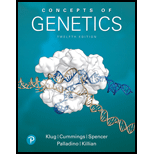
Concept explainers
In order to vaccinate people against diseases by having them eat antigens (such as the cholera toxin) or antibodies expressed in an edible vaccine, the antigen must reach the cells of the small intestine in order to enter the bloodstream. What are some potential problems of this method?
To determine: The potential problems associated with the oral vaccine.
Introduction: Vaccination is the process of immunizing a person against disease by administrating weak or dead microbes that cause the disease so that immune system recognizes these microbes and develop immune cells against the disease for future encounters.
Explanation of Solution
For vaccines to form immune cells, it is necessary that the vaccine comes in contact with the blood. In the case of oral administration of the vaccines, the vaccines can only enter the bloodstream during the absorption stage in the small intestine. So, the potential problems associated with oral administration of vaccines are as follows:
- The molecular integration of the microbes present in the vaccine should be able to tolerate the harsh condition of the gastrointestinal (GI) tract.
- Oral vaccines also require to be administered in larger quantity because, in some people, induction of tolerance is difficult at a lower concentration.
- Larger concentration increases the chances of a person receiving the disease instead of immunization.
Oral vaccines should be able to tolerate the harsh conditions of the GI tract, and the concentration of the vaccine should also be high which increases the chances of a person being infected by the disease due to the vaccine.
Want to see more full solutions like this?
Chapter 22 Solutions
Concepts of Genetics Plus Mastering Genetics with Pearson eText -- Access Card Package (12th Edition) (What's New in Genetics)
- 1. Match each vocabulary term to its best descriptor A. affinity B. efficacy C. inert D. mimic E. how drugs move through body F. how drugs bind Kd Bmax Agonist Antagonist Pharmacokinetics Pharmacodynamicsarrow_forward50 mg dose of a drug is given orally to a patient. The bioavailability of the drug is 0.2. What is the volume of distribution of the drug if the plasma concentration is 1 mg/L? Be sure to provide units.arrow_forwardDetermine Kd and Bmax from the following Scatchard plot. Make sure to include units.arrow_forward
- Choose a catecholamine neurotransmitter and describe/draw the components of the synapse important for its signaling including synthesis, packaging into vesicles, receptors, transporters/degradative enzymes. Describe 2 drugs that can act on this system.arrow_forwardThe following figure is from Caterina et al. The capsaicin receptor: a heat activated ion channel in the pain pathway. Nature, 1997. Black boxes indicate capsaicin, white circles indicate resinferatoxin. a) Which has a higher potency? b) Which is has a higher efficacy? c) What is the approximate Kd of capsaicin in uM? (you can round to the nearest power of 10)arrow_forwardWhat is the rate-limiting-step for serotonin synthesis?arrow_forward
 Human Heredity: Principles and Issues (MindTap Co...BiologyISBN:9781305251052Author:Michael CummingsPublisher:Cengage Learning
Human Heredity: Principles and Issues (MindTap Co...BiologyISBN:9781305251052Author:Michael CummingsPublisher:Cengage Learning Medical Terminology for Health Professions, Spira...Health & NutritionISBN:9781305634350Author:Ann Ehrlich, Carol L. Schroeder, Laura Ehrlich, Katrina A. SchroederPublisher:Cengage Learning
Medical Terminology for Health Professions, Spira...Health & NutritionISBN:9781305634350Author:Ann Ehrlich, Carol L. Schroeder, Laura Ehrlich, Katrina A. SchroederPublisher:Cengage Learning Human Physiology: From Cells to Systems (MindTap ...BiologyISBN:9781285866932Author:Lauralee SherwoodPublisher:Cengage Learning
Human Physiology: From Cells to Systems (MindTap ...BiologyISBN:9781285866932Author:Lauralee SherwoodPublisher:Cengage Learning





